1.Best 3D Printer Overall- Creality K2 Plus2.Fastest Budget 3D Printer-Elegoo Centauri Carbon3.Best Premium 3D Printer- Prusa Core One4.Best 3D Printer for Beginners- Bambu Lab A1 Mini5.Best Budget 3D Printer- Creality Ender 3 V3 SE6.Best Professional 3D Printer- Bambu Lab H2D7.Best Multicolor 3D Printer- Original Prusa XL8.Best Large Format 3D Printer- Sovol SV06 Plus ACE9.Best Ultra High Resolution 3D Printer- Elegoo Mars 5 Ultra10.Best Large Resin 3D Printer-Anycubic Mono Photon M7 Pro11.Best Laser Cutter Attachment for a 3D Printer -Bambu Lab H2D Laser Combo
I’ve reviewed nearly a hundred 3D printers since joining the Tom’s Hardware team, putting each through rigorous testing for speed and accuracy. But a 3D printer can quickly turn into a fancy doorstop if it’s not easy to use, maintain and upgrade. I’ve traveled the globe, talking to both makers and manufactures about what features make their favorite 3D printers the very best the world can offer.
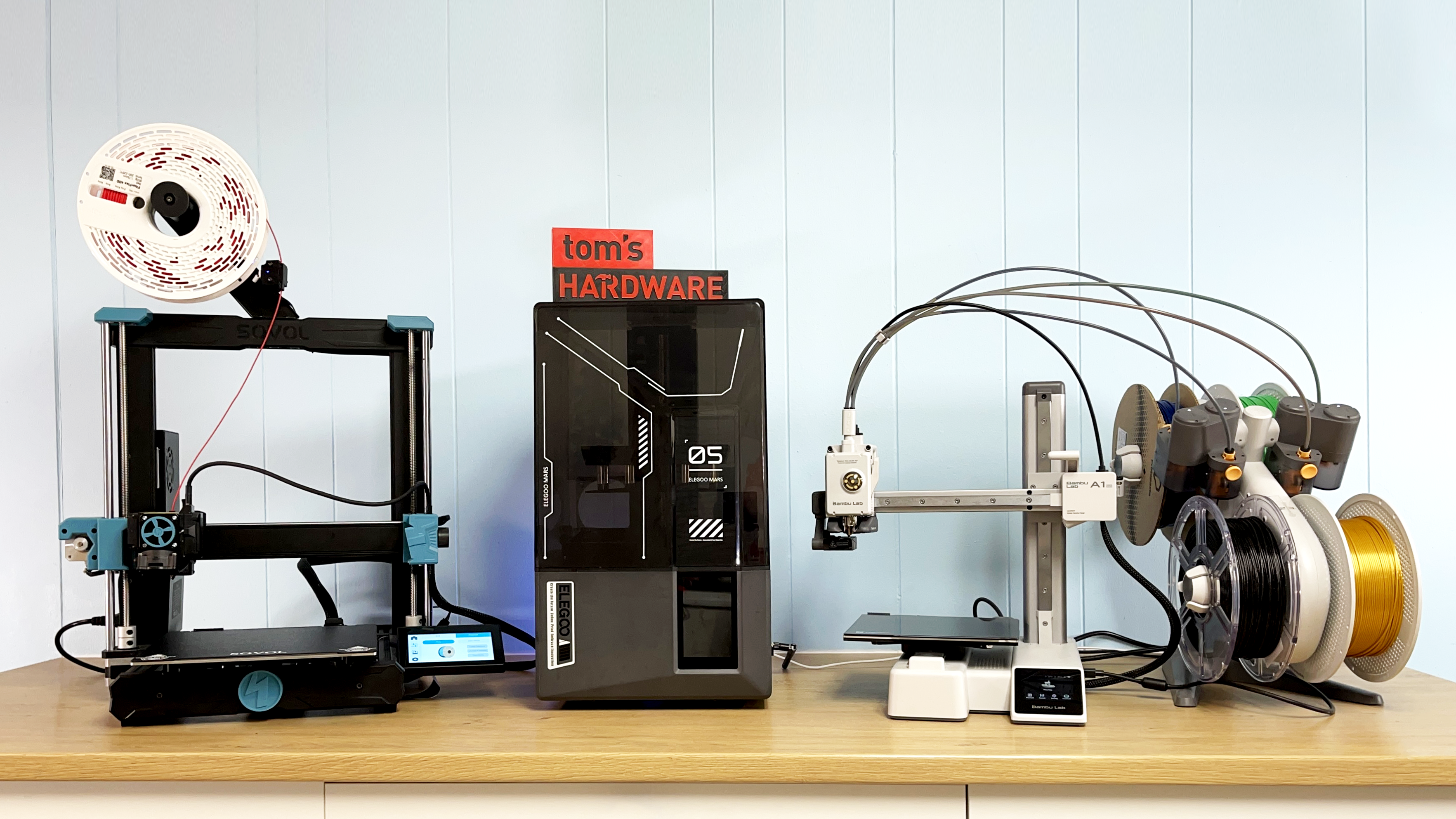
Consumer 3D printing is a rapidly evolving industry, going from bare wires and handmade nozzles to fully automatic plug and play machines in a mere dozen years. One of the most popular 3D printers on the market right now – the Bambu Lab X1C – launched as a Kickstarter project in 2022. This is why I review every 3D printer I can get my hands on, constantly marveling as manufactures break records each and every year.
Of course, not every 3D printer is a technological wonder. Some are down right lemons and not worth your hard-earned cash. This is why we made the Tom’s Hardware Best 3D Printer List. There is no one size fits all in 3D printing, so we’ve picked the best machine to fit your needs and budget. Whether you’re looking for an entry level machine for the home or a multi-material business workhorse, we can help you find the perfect match.
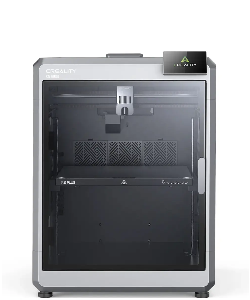
It’s never been more affordable to get into 3D printing, withBest Budget 3D Printersstarting at $200 or less. But not every printer is right for every job. High-precision prototyping calls for a 3D printer like thePrusa Original MK4S, while colorful toys and games can be printed on your coffee table with a four-colorBambu Lab A1 Mini. Artists and tabletop gamers should check out our recommendations for theBest Resin 3D Printers, which measure resolution in the microns. If you want to crank out prototypes as fast as possible, we have a3D Printer Speed Hierarchythat ranks printers according to speed alone.
Below are our picks for the best 3D printers on the market today.

Best 3D Printer Overall
The Creality K2 Plus is a fully enclosed Core XY powerhouse machine. It is bigger and better than theBambu Lab X1C($1,499 stand-alone). It includes multiple sensors for excellent bed leveling and two AI-driven cameras for monitoring prints. If you’re looking for a fast, multi-color machine for larger prints, the K2 Plus is your top choice on sale for$1,299(stand-alone) and $1,499 (with CFS).
Read more below
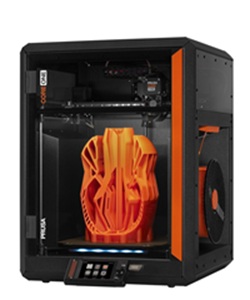
Fastest Budget 3D Printer
Elegoo’s Centauri Carbon is the best 3D printer for makers looking for an affordable speedster. It runs at an impressive top print speed of 500 mm/s and a maximum acceleration rate of 20,000 mm/s² with a sale price of $299. It’s fully enclosed, pre-assembled, and ready to use out of the box.
Best Premium 3D Printer
The CORE One is Prusa’s first Core XY offering, and it does not disappoint. It’s built for precision, and our tests prove it. It shares most of the same parts and has a similar size and build volume as theMK4S, but it is 20% faster and has an enclosed chamber that can reach up to 50 degrees Celsius to work with all types of filaments. You can get it fully assembled for $1,199 (that’s just $100 more than the MK4) or save $250 and get the kit. A conversion kit is available for MK4S owners for$450.
Best 3D Printer for Beginners
This $199 bed slinger may come with a modest 180 x 180 x 180mm build volume, but the A1 Mini runs at an impressive top speed of 500mm/s with incredible accuracy. It’s so easy to use it is perfect for beginners or anyone who wants to try printing multi-color models without breaking the bank.
Best Budget 3D Printer
A beginner’s dream machine, the Ender 3 V3 SE is one of the most affordable bed slingers, retailing at$218. Despite its low price, Creality did not scrimp on deluxe features. It has auto bed leveling, auto filament loading, and a modern LED interface.
Alternatively, theNeptune 4 Prois a faster machine on sale for$219, but know that this does not have auto-bed leveling.
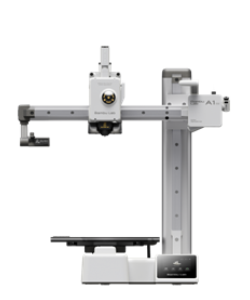
Best Professional 3D Printer
The H2D is a worthy successor to theX1 Carbon. This amazing dual-nozzle workhorse has a bigger build volume, multi-material support, hands-free auto bed leveling, and more. But of course, all these premium features come at a cost, starting at $1,899 for the standalone model, $2,199 for the AMS Pro combo, and $2,799 for the Laser Combo - the ultimate maker dream machine.
Best Multicolor 3D Printer
Five toolheads are better than one — especially if you are looking to do multicolor prints easily. Prusa’s XL allows you to use multiple materials like PLA, TPU and PETG in one print and with no waste. It comes with a premium price of $1,999 semi-assembled. Add on$500for the fully assembled model.
Best Large Format 3D Printer
The Sovol SV06 Plus Ace is excellent for prop makers and cosplayers. It’s an affordable large-format 3D printer that’s fast, easy to assemble and easy to use. With its 300x300mm build plate, you can quickly print helmet-sized models or a batch of articulated toys. We love that it includes vanilla Klipper and features like automatic bed leveling and a built-in camera.
Best Ultra High Resolution 3D Printer
Elegoo’s Mars 5 Ultra checks all the boxes for fast, high-quality, super detailed resin printing. It’s perfect for tiny figures with tiny details. It also comes with lots of automatic features like auto-leveling and tilt release that makes it easy to use. On sale right now for $269 - that’s a $70 savings from original MSRP.
Best Large Resin 3D Printer
The Photon Mono M7 Max is an excellent printer for anyone interested in printing large models or large batches of multiple models. It’s fast, includes smart features for easy use, and though it may not have the same resolution as its little brother, theM7 Pro, it’s capable of outputting high-quality, detailed prints. With an MSRP of $899 (on sale at Anycubic for $799), the M7 Max is not cheap but is well worth the money.
Best Laser Cutter Attachment for a 3D Printer
The H2D optional deluxe laser combo transforms this deluxe printer into an amazing mini craft factory that can print, cut, and burn. It includes everything an elite crafter would want combined into one machine, from the AMS 2 Pro, laser cutting work surfaces, and pre-installed safety glass, to a built-in camera, and even an emergency stop button. The 10W laser goes for $2,799, and the 40W model costs $3,499.
Denise has been using 3D printing as a creative outlet since 2020 when she got her first Creality CR10s. She’s been a freelance newspaper reporter, online columnist and craft blogger with an eye for kid’s STEM activities. She’s added YouTube to her social media skills and has traveled cross county and overseas to talk 3D printing with fellow makers. She’s analyzed nearly 100 different 3D printers, from a tote bag sized delta to a meter wide Elegoo OrangeStorm Giga currently camped out in her living room. When she’s not building 3D printed RC cars or stirring glitter into a batch of resin, you’ll find her at the latest superhero movie with her husband and two sons.
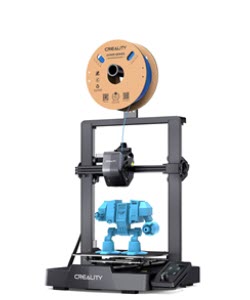
The Best 3D Printers You Can Buy Today
Why you may trust Tom’s HardwareOur expert reviewers spend hours testing and comparing products and services so you can choose the best for you.Find out more about how we test.
Reasons to buy
Reasons to avoid
2025 is going to be the year of speedy color FDM 3D printers, and Creality’s K2 Plus has nailed it. This printer has a cruising speed of 300mm/s with a 30000mm/s² max acceleration rate, and easily prints in four colors with its new “Creality Filament System.” It can handle much larger prints than its rivals, with a 350mm cubed build volume.
It has a high flow nozzle that can heat up to 350 degrees, and a heated, which means it can handle nearly any filament from PLA to PC. TPU must be run through a side port on a traditional spool holder – but no one has managed to make soft filaments run through all the tubing needed for a color swapping 3D printer.
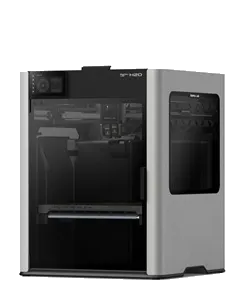
Some would say Creality is merely cribbing off Bambu Lab and their wildly successful X1-Carbon. But Creality has brought many improvements to color printing that we’ve yet to see from upstart Bambu: a bigger print volume, a heated chamber and the ability to easily print offline with full open source Klipper. Creality remembers its roots as a scrappy DIY 3D printer for enthusiasts, and remainsfaithful to the open source community.
The machine retails for $1,499 as a four color combo, which may not fit everyone’s budget. But the K2 Plus is easy to use right out of the box, so it’s not limited to only experienced makers or small business owners. Its flexibility, paired with quiet fans and carbon filtration system, makes it a worthwhile purchase for home or office.
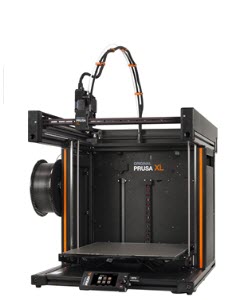
My only fault with the printer is one that’s hard to avoid – the CFS wastes a bit more filament than the Bambu AMS due to its high flow hotend with a larger melt zone and lack of fine control in the custom slicer. It also needs to be properly warmed up, as it uses a thick aluminum plate to ensure a flat print surface.
The Centauri Carbon is everything you want in a budget-friendly, speedy printer. It’s a fast, enclosed Core XY with a bed slinger price tag, launching at $299.99. Its speed and build size is similar to the top-of-the-line Bambu Lab printer, with a top speed of 500mm/s and 20,000mm/s² acceleration. It uses an Elegoo fork of Klipper to reduce vibrations and optimize pressure advance to produce excellent prints.
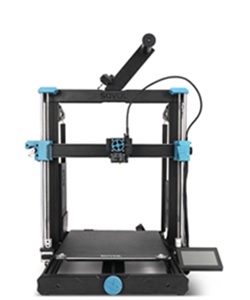
We were able to print an absolutely perfect PLA 3D Benchy in 18 minutes and 19 seconds. The Centauri Carbon’s high flow hotend handled PLA, PETG, TPU, ABS and ASA without any issue. The top lid must be removed to print cooler filaments, but that’s a common design issue with low-priced machines. It does a good job of retaining heat when the lid is on for printing ASA & ABS – it wasn’t quite enough to print more tricky PC Blend filament. But for average users, it handles more typical filaments without any trouble at all.
It’s perfect as a beginner machine or a print farm workhorse. It’s preassembled, so you just unbox and go. The easy access spool holder, simple filament loading routine and USB port front and center make the machine a breeze to use. The Centauri Carbon doesn’t require cloud access and runs off an Elegoo fork of Klipper, meaning you can control your own datasecurity.
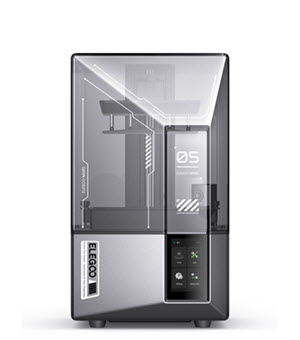
The long-awaited Prusa Research Core XY machine has arrived—and it doesn’t disappoint. Engineers took the best parts of the highly rated MK4S and encased it in a slim steel exoskeleton with a cooling system that allows the printer to operate safely with the door shut, even with PLA. The CORE One is 20% faster than the Prusa MK4S, with slightly better print quality.
The CORE One has a dozen seemingly small but extremely thoughtful tweaks that make for a better machine when taken as a whole. For example, the steel case does double duty as the printer’s frame. The walls are punched in to make the space smaller and easier to heat, and the indents serve as a discrete place for a side-mounted spool holder. The other side is left empty, which is cheaper for Prusa to produce and creates a customizable storage space to suit each user’s needs.
The doors are lightweight, unbreakable, and can be mounted with the hinge on either side. Clunky cable chains have been thrown out in favor of a simple swing arm that keeps the printer’s tubes and wiring in place. And that special cooling? It’s all made possible by placing a manually operated vent in the printer’s top panel, so you don’t have to take it off or leave the door open.
And since it’s a Prusa, it has fully automatic bed leveling, sets its own z height, and comes with factory-set input shaping. Its native slicer program is a gold standard many other companies have used for their “custom” slicers. And because of Prusa Research’s attention to detail, the CORE One has dozens of slicer profiles for every filament imaginable.
The CORE One retails at $1,199, which is only $200 more than the MK4S. you’re able to save money by building the kit version for $949 orconverting a MK4S for $449.
If you want to squeeze as much printing power into a small space (and tight budget) as possible then Bambu Lab’s A1 Mini checks all the boxes. It’s a bed slinger style mini 3D printer with the option of adding a “lite” AMS (Automatic Material System). It’s the fastest bed slinger we’ve clocked so far and nearly as fast as Bambu’s larger Core XY machines.
Retailing at $299 for the printer and $459 with the AMS Lite, it packs more features than the competition for significantly less money. It has an intuitive color touch screen, quick change steel nozzles and a blazing 10,000mm/s² acceleration speed for fast, clean prints. The A1 Mini can level the bed and set its own Z height with the touch of a button.
The AMS for the A1 Mini spoils the compact footprint a bit, as it has to be set next to the printer rather than on top. It makes up for the inconvenience by being superior to the full-sized AMS with sensors that detect tangles and a spindle for each spool that can accommodate filament with odd sized or cardboard spools.
There has never been a more user-friendly, budget 3D printer than Creality’s Ender 3 V3 SE. Say goodbye to scratch builds and manual leveling. This machine takes no more than 15 minutes to assemble, then self-levels and sets its own Z height. Its modern LED interface makes the machine simple to use and comes complete with guides to walk you through filament changes and more.
It’s faster than previous Ender 3s, with a max speed of 250mm/s, which is mainly due to a robust build, with linear rods on the Y axis and dual Z axis, rather than speedy firmware.
Obviously, Creality had to cut a few corners to produce this machine. It only has one Z stepper motor – the second Z axis is synced with a belt. The bed has a cheaper PC surface, and there’s no Wi-Fi.
Bambu Lab’s H2D is a professional grade 3D printer that takes everything we like about the X1 Carbon and steps it up a notch. It not only has a larger build volume than the X1C, its dual-nozzle hotend is a remarkable improvement that saves time and filament, especially with two color prints. The heated chamber, combined with the smart AMS 2 Pro, which also acts as a filament drier, makes printing with moisture prone filaments a breeze. If you work with high temperature filaments, a new single spool AMS HT can heat up to 85C to dry engineering grade materials.
Though the stock H2D is a fantastic machine on its own, the H2D Laser Combo is a true multitasker with your choice of a 10 or 40 watt laser for cutting and engraving, plus a tool for blade cutting paper, leather and vinyl. It can also act as a plotter by swapping the blade for a pen. Bambu is clearly taking aim at markets held by xTool, Glowforge, and Cricut by integrating an easy-to-use laser with camera guided positioning and well labeled materials. Like their high-end competitors, materials purchased from Bambu are marked with QR codes the printer can read and use to select the perfect settings.
Unlike previous attempts at 3 in 1 machines by other companies, the Bambu Lab H2D is extremely easy to switch from one mode to another. The laser and cutting tool heads are add-on modules that lock onto the 3d printing toolhead, which never leaves the machines. The work surfaces for the laser and cutting tool stick to the heated bed’s magnet. There’s nothing to unscrew, just flip a few latches and plug in the cords and air assist.
With a starting price of $1,899 for the base model and up to $3,499 for the fully equipped laser combo, the H2D might be out of range for the casual hobbyists. But it’s perfect for serious crafters and entrepreneurs who don’t want to limit their creativity because they lack space for all the tools.
We’re finally seeing 3D printers catch up with Bambu Lab’s Automatic Material System, first launched in 2021 and capable of producing four color prints with a single unit. Prusa Research’s XL has surpassed the X1 Carbon with a five-spool tool changer system that is faster and far less wasteful. Because each spool has a dedicated filament path and its own hotend, the XL can rapidly change colors without having to load and unload materials. Instead, each color is on standby at 175° and only needs a quick heat up and prime before going to work.
This system is not only faster, but it doesn’t waste material. The Bambu Lab AMS system is infamous for piles of “filament poop” that plague users. Because the AMS system shares one nozzle, it has to be cleaned of melted filament with each color change. Only cold filament can go back on the roll.
This is not Prusa’s first attempt at color, having developed a multicolor attachment for their MK series as far back as 2017. Sadly, the MMU is quirky and never quite caught on. However, it allowed Prusa to adapt PrusaSlicer to multicolor slicing and gave them ample time to perfect the software before the XL launched.
TheOriginal Prusa XLis a true “multi-material” 3D printer that can handle up to five different materials. Because each spool of filament gets its own hotend, users can mix and match filament types as well as colors, and adjust temperature and flow accordingly.
The only downside to the Prusa XL is its price, which is a hefty $3,999 when fully equipped with five tool heads and shipped assembled. Users can start with a less expensive two-head machine and purchase more tool heads later as upgrades.
If you want a more affordable multicolor system and don’t mind a smaller build volume, there are a couple of 3D printers to consider. We recently reviewed theKobra 3, Anycubic’s first four-color bedslinger, which comes with input shaping and impressive speed. The slicer still needs work, though. It launched with an MSRP of $549 and is currently on sale for$489. Alternatively, theBambu Lab P1Sis a solid option with speed, quality, and an AMS system that can print up to 16 colors. The combo costs$849,and the stand-alone machine is$599.
The SV06 Plus ACE is a “helmet class” large scale 3D printer that is both fast and affordable. Though not as big as some of the max printers out there, this one has plenty of real estate for human scale prints without needing to rearrange your whole workshop.
This printer is based on Prusa’s open source i3, with a few extra touches added by Sovol. It has a high flow hotend, built-in camera for monitoring prints, and of course the vanilla Klipper for speed and precision.
Bigger printers have been getting more complex and it’s refreshing to find a large 3D printer that keeps it simple. During testing, I printed a highly detailed, super strong, dragon shelf in PLA that maxed out the bed plate but still printed in one day.
Table-top gamers rejoice! The Elegoo’s Mars 5 Ultra makes 3D printing tiny orc armies and hordes of space marines a breeze. This resin printer has a Bag of Holding’s worth of automatic features: auto-leveling, tilt release, failure detection, and resin level detection. It also comes with a built-in camera to magically monitor your prints and a layer of tempered glass to protect the light source.
Its small size is perfect for printing miniatures, plus it’s fast and precise. Feed it high-detail resin, and you’ll get prints with razor sharp details. The tilt release aids print speed and reduces failure rates as it gently peels each layer off the bottom film before dunking the model back into the resin.
The Elegoo Mars 5 Ultra launched with a $338 MSRP but is currently available for$269.99at Elegoo.
With its amazing speed and a huge build volume that rivals most FDM 3D printers, the Anycubic Photon Mono M7 Max will produce high quality prints in just a fraction of the time other machines use. you may print entire armies of gaming miniatures or full sized sculptures with excellent detail using ordinary resin is used. If you want to crank up the speed, switching to a thinner high speed resin will let the machine run twice as fast.
The Photon Mono M7 Max is packed with smart features to monitor resin levels and watch out for print fails. It comes with a resin pump to keep the vat full of resin, though on our test unit this feature did not work. It also has a heater pump built into the vat which slowly circulates warm resin throughout the build plate to improve speed and quality. The factory leveled build plate lets you go from unboxing to printing in 15 minutes.
The Anycubic Photon Mono M7 Max launched with a $899 MSRP, but is currently available for$849 at Amazonand $799 at the Anycubic store.
Bambu Lab’s H2D is a multitasking beast that combines Core XY 3D printing with lasers, a blade cutter and pen plotter. You can choose between a 10 or 40 watt laser for cutting and engraving, which automatically includes a tool for blade cutting paper, leather and vinyl. Bambu is clearly taking aim at markets held by xTool, Glowforge, and Cricut by integrating an easy-to-use laser with camera guided positioning and well labeled materials. Like their high-end competitors, materials purchased from Bambu are marked with QR codes the printer can read and use to select the perfect settings.
Unlike previous attempts at 3 in 1 machines by other companies, the Bambu Lab H2D is extremely easy to switch from one mode to another. The laser and cutting tool heads are add-on modules that lock onto the 3d printing toolhead, which never leaves the machines. The work surfaces for the laser and cutting tool stick to the heated bed’s magnet. There’s nothing to unscrew, just flip a few latches and plug in the cords and air assist. Cutting is done with a steel printing type plate covered in sticky material to hold down most materials. Magnets are also included to pin down thicker materials.
The H2D Laser Full Combo with a 10W laser is retailing for $2799. This has a Core XY 3D printer, an AMS 2 Pro, plus a the laser and cutting work surfaces, pre-installed safety glass, bird’s eye camera and the emergency stop button. It will be available for pre-order and will start shipping at the end of April.
The 40W H2D Laser Full Combo retails for $3499. This has the Core XY 3D printer, an AMS 2 Pro, plus a laser and cutting work surfaces, pre-installed safety glass, bird’s eye camera and the emergency stop button. It will also be available for pre-order and will ship at the end of April.
An optional air purifier will be made available soon, pricing to be announced.
How We Test 3D Printers
We thoroughly review and test every 3D printer that enters our workshop using the following methodologies:
Finding the Best 3D Printer for you
There are several factors to consider before buying the best 3D printer for you, so be sure to consider these questions before making a choice.
✅ Resin MSLA or Filament FDM?The two most popular styles of desktop 3D printing, resin MSLA and filament FDM 3D printers offer various strengths and weaknesses, and choosing the style more suited for your application will help you get better results. For many , especially beginners, filament 3D printers are a better choice because they are easier to use and work with a wide variety of materials. They are also far safer for anyone with children or pets around.Resin 3D printers can provide a bit more detail, so they are popular among folks printing out game pieces. However, you need to handle toxic chemicals and wear a mask when setting up a print and, after the printing is over, you must wash and cure your prints. We have some resin printers on this list but also maintain a more detailed article where we name all of thebest resin 3D printers.
✅ How much build volume do you need?If you want to print out large parts in a single print, you’ll need a printer with ample build volume. This is usually directly tied to the price of the machine, so a larger printer is going to cost more money. Printers with a 100mm cubed or less build volume are on the smaller side, 150 to 220mm cubed are average, and 250mm inch cubed and above are considered large format.
✅ Manual or automatic bed leveling?
Leveling the bed of a 3D printer is an important but very annoying part of the process. Many printers have auto-leveling capability, which saves you most of the work and, considering that you can now find printers with this feature for less than $250, you should consider it a must-have.
✅ What materials are you printing with?
If you’re buying an FDM printer, you’ll want to use one of thebest filaments for 3D printingso you may get good models. However, some substances require higher temperatures that not every printer can achieve. PLA filament, the most common type, can print on anything but more durable or flexible plastics such as PETG or TPU need extruders that can hit 220 to 230 degrees Celsius while ABS and Nylon require 240 or 250-degree heat. Also, note that if you want to print in TPU (a flexible material), you should get an FDM printer with a direct drive system that pushes the filament more directly through the extruder. Resin printers have fewer material choices.
Get Tom’s Hardware’s best news and in-depth reviews, straight to your inbox.
Denise Bertacchi is a Contributing Writer for Tom’s Hardware US, covering 3D printing. Denise has been crafting with PCs since she discovered Print Shop had clip art on her Apple IIe. She loves reviewing 3D printers because she can mix all her passions: printing, photography, and writing.